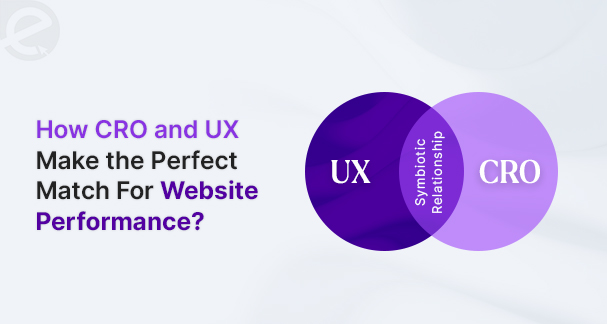
Basic and Trending Industry Insights
We Develop Websites Keeping Marketing in Mind
Book A Call
Do the Brands Have the Right To Own A Colour?
 Jan. 21, 2022, 11:30 AM
Jan. 21, 2022, 11:30 AM- By Eclick Softwares and Solutions

The answer to the question in our topic is YES.
By all means, the brands are having all the right in protecting their heritage and even trademark their colors, if the colors are truly fundamental to their visual identities. Nevertheless, the ownership must only be applied only to their sectors. Several companies are owning trademarks because of specific colors.
Â
As the brand most critical identity is its color, so the companies must claim ownership overusing the narrow strip of the non-functional color values to define themselves within their hardcore competitive market, only if that particular color is possible for demonstrating that the customers can clearly associate the particular color with the brand.
Â
Every Great Brand Are Owning A Color
Â
All the worldwide great brands have the right to claiming color ownership, either universally or in their specific markets. Now, this claim to the colors must be the considerations while the brand undergoes development. Â
Â
In branding, color has a dominant role to play. Colors have the power for evoking a positive feeling and assisting companies to establish their identities in the busy crowded market. Only the fortunate ones, their selected color could become synonymous with that of their brand. Rather, the colors are universally identified as the logo of the company as they go a long way in establishing the company's identity to mention its industry.
Â
This video will clearly point out the companies that can be identified just with the industry as well as the color reference.
Â
Therefore, the brands can and they do own colors. Logos often dominate the visual identity conversations are, still, the logos need not always be the necessarily important visual asset for your brand. When the customers walk down the shopping mall or else a supermarket aisle, then the very first thing your brain is processing is color. So, it is often the same when the browsers diligently search for the price comparison website.
Â
As A Trade Mark, When Can the Colors Be Registered?
Â
Whether a business or an individual can get a color registered as the trademark – only when they are answering "Yes" to all the three following questions –
Â
1. Is the public viewing the color along with the good services associated with it as being synonymous?
Â
2. Do the colors on their own distinguish the products and services?
Â
3. Is the color only a part of a trademark, and it is not the part of the goods themselves and of the packaging?
Â
The Courts have even laid an emphasis on the importance of specificity. To speak in general words, the companies are not supposed to trademark a color, they can only trademark a specific shade of the color.
Â
What the Statistics Have to Say Regarding Branding Colors?
Â
Being guided by Carl Jung's hypothesis, several scientific studies have been conducted which provide a large count of statistics on the basis of brand collaboration and success.
Â
Here are the statistic regarding color –
Â
A signature color has the ability for increasing 80% brand awareness.
Â
33%Â of the existing top brands are using blue in their logos, while 29% are using blue and 28% are using grayscale and black colors.
Â
90%Â of purchase choices are subconsciously made on the basis of emotional responses. Often the decisions are triggered by colors.
Â
62% - 90%of judgments made based on appearances are formulated owing to the color schemes
Â
Up to 90% of snap judgments made on the products are determined by the colors
Â
A Few Helpful Tools To Choose The Colors For Your Brands
Â
Many helpful tools for selecting the right color matching your brand are available online -
Â
Colr.org for importing photographs related to the color schemes that are preferred and for generating color palettes based on the tones choices.
Â
Adobe Color CC, earlier known as Adobe Kuler, for trying out and saving different color themes. These can further be exported directly to other software like Illustrator and Adobe Photoshop. Adobe Color CC is highly useful when a color wheel for a brand has to be created.
Â
Check My Colors for checking foreground and background color combinations to bring out sufficient contrasts for those who suffer from the color-identifying deficit. It helps in ensuring the colors are in compliance with the WCAG guidelines.
Â
Designspiration to select five colors that are preferred and then generate the images with the same color combinations. Then a favorite combination can be selected with ease and get their hex codes for using them for your brands.
Â
Colors, a quick color palette generator to be used for creating color schemes instantaneously for brands. Exploring color schemes as the other designers have created can be copied for your brand.
Â
Colormind generates color schemes randomly and mutually for learning in detail about each color as given in the palette. It can be seen how the colors are looking with specific UI components such as tabs and buttons.
Â
Colordot, a simple and easy color scheme generator for instantly generating color schemes on the basis of preference.
Â
Â
Being the marketer, exploring how color psychology can send the perfect message to the target audiences is much useful. Your brands' colors should be integrating throughout your website, landing pages, logos, products, and all other created collaterals. Through stronger branding the impact of looking at the right colors usage increases and it further influences your business.
Â
Related Blog
- By Eclick Softwares and Solutions
- November 21, 2024
Why Good UX Design Mean B ...
UX creates a verified impact on CRO for a website. The users ...
Read More- By Eclick Softwares and Solutions
- November 11, 2024
How Important is a Websit ...
Where the customers land and browse to find their needed pro ...
Read MoreFeel free to contact us gg
Search Blog...
Recent Posts
Eclick Services







